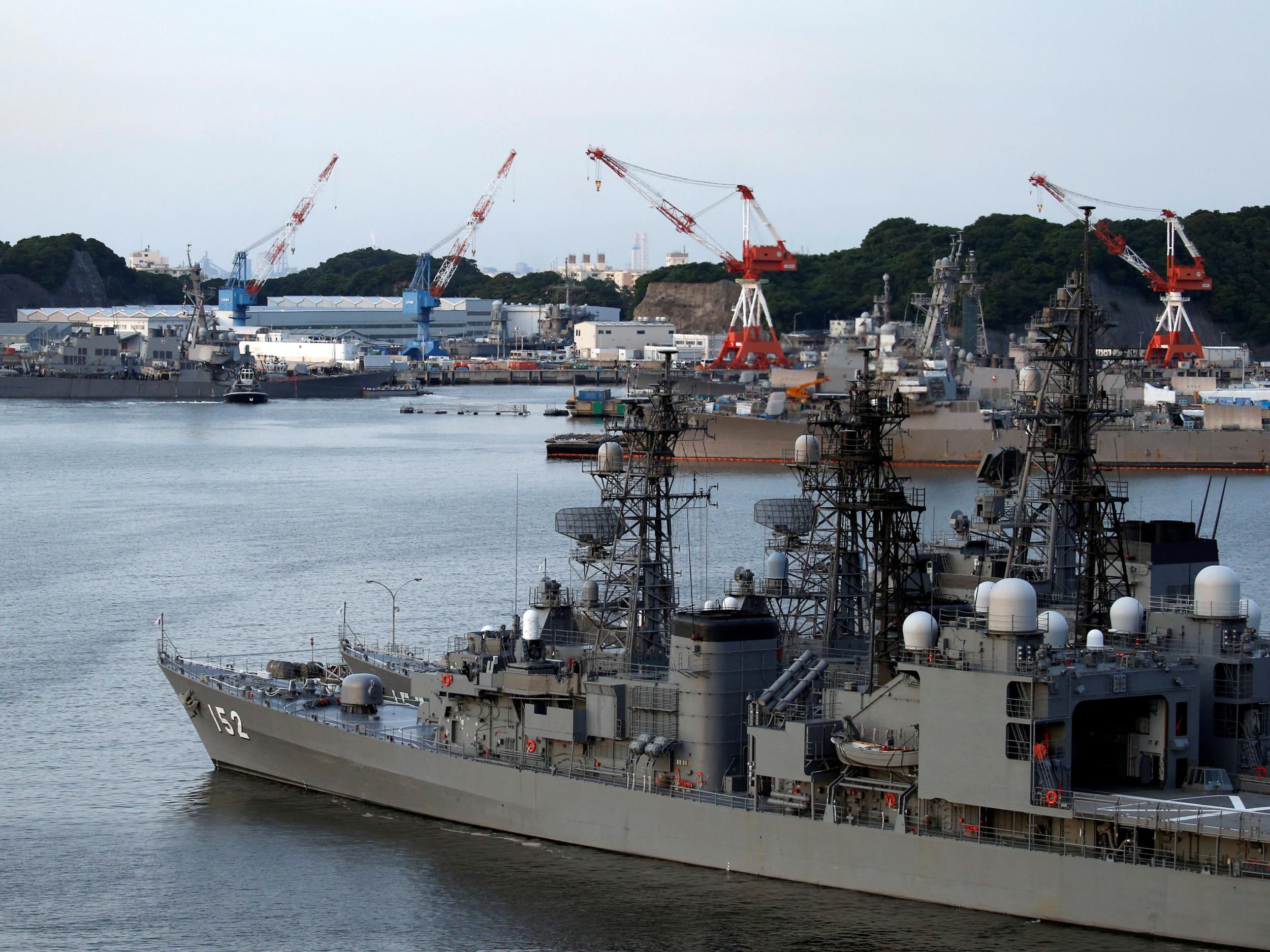US warship 'stayed on deadly collision course with cargo ship despite warnings'
Seven killed in incident in Japanese waters on 17 June when destroyer USS Fitzgerald smashed into Philippine container vessel the ACX Crystal

Your support helps us to tell the story
From reproductive rights to climate change to Big Tech, The Independent is on the ground when the story is developing. Whether it's investigating the financials of Elon Musk's pro-Trump PAC or producing our latest documentary, 'The A Word', which shines a light on the American women fighting for reproductive rights, we know how important it is to parse out the facts from the messaging.
At such a critical moment in US history, we need reporters on the ground. Your donation allows us to keep sending journalists to speak to both sides of the story.
The Independent is trusted by Americans across the entire political spectrum. And unlike many other quality news outlets, we choose not to lock Americans out of our reporting and analysis with paywalls. We believe quality journalism should be available to everyone, paid for by those who can afford it.
Your support makes all the difference.A US warship struck by a container vessel in Japanese waters failed to respond to warning signals or take evasive action before a collision that killed seven of its crew, according to a report of the incident by the Philippine cargo ship's captain.
Multiple US and Japanese investigations are under way into how the guided missile destroyer USS Fitzgerald and the much larger ACX Crystal container ship collided in clear weather south of Tokyo Bay in the early hours of 17 June.
In the first detailed account from one of those directly involved, the cargo ship's captain said the ACX Crystal had signalled with flashing lights after the Fitzgerald “suddenly” steamed on to a course to cross its path.
The container ship steered hard to starboard to avoid the warship, but hit the Fitzgerald 10 minutes later at 1:30am, according to a copy of Captain Ronald Advincula's report to Japanese ship owner Dainichi Investment Corporation that was seen by Reuters.
The US Navy declined to comment and Reuters was not able to independently verify the account.
The collision tore a gash below the Fitzgerald's waterline, killing seven sailors in what was the greatest loss of life on a US Navy vessel since the USS Cole was bombed in Yemen's Aden harbour in 2000.
Those who died were in their berthing compartments, while the Fitzgerald's commander was injured in his cabin, suggesting that no alarm warning of an imminent collision was sounded.
A spokesman for the US Navy's Seventh Fleet in Yokosuka, the Fitzgerald's home port, said he was unable to comment on an ongoing investigation.
The incident has spurred six investigations, including two internal hearings by the US Navy and a probe by the United States Coast Guard (USCG) on behalf of the National Transportation Safety Board. The Japan Transport Safety Board, the JCG and the Philippines government are also conducting separate investigations.
Spokesmen from the Japan Coast Guard (JCG), US Coast Guard and ship owner, Dainichi Invest, also declined to comment. Reuters was not able to contact Advincula, who was no longer in Japan.
The investigations will examine witness testimony and electronic data to determine how a naval destroyer fitted with sophisticated radar could be struck by a vessel more than three times its size.
Another focus of the probes has been the length of time it took the ACX Crystal to report the collision. The JCG says it was first notified at 2:25am, nearly an hour after the accident.
In his report, the ACX Crystal's captain said there was “confusion” on his ship's bridge, and that it turned around and returned to the collision site after continuing for six nautical miles (11 km).
Shipping data in Thomson Reuters Eikon shows that the ACX Crystal, chartered by Japan's Nippon Yusen, made a complete U-turn between 12:58am and 2:46am.
Reuters
Join our commenting forum
Join thought-provoking conversations, follow other Independent readers and see their replies
Comments